Cast iron has become a cult favorite in the kitchen for good reason. It’s strong and durable and gets scorching hot to sear food better than with most other cookware materials. But when it comes to cleaning and care, there is very much the right way to handle cast-iron pots and pans, and cutting corners can damage the seasoned, nonstick patina that your favorite skillet has developed over time.

If you’re new to the cast-iron club, we’ve got a guide on how perfectly seasoning your cast-iron skillet. Once you’ve done that, you’ll want to brush up on how to clean cast iron so it lasts for decades, delivering crust-inducing heat and imparting deep flavor to your food. And for super stuck-on bits, there’s a common ingredient sitting in your pantry that’ll help lift the bad stuff from your cast-iron skillet with ease. Give up? It’s salt.
Here’s how to properly clean cast iron (and how not to) to keep your favorite skillet in tip-top shape. (Make sure you also check out how to perfectly season a cast-iron pan, and the best way to cook bacon.)
Can you put cast-iron cookware in the dishwasher?
You might be wondering if you can put your cast iron in the dishwasher in a pinch. While the dishwasher likely won’t ruin the pan or render it useless, it will strip that important layer of seasoning and nonstick patina from the surface that you’re working to build over time.
How to clean your cast-iron skillet like a pro
It doesn’t take more than a few minutes to clean a cast-iron pan. You also don’t need to give your pan a full, deep clean after every use. If you’ve only fried an egg or reheated some chick breast, for instance, a rag soaked in warm water is likely all you’ll need to wipe it clean.
But if you’ve just seared something with excess grease or there are stuck-on bits of food hanging out, follow these simple steps and your cast iron will stay clean and continue to hold that beautifully seasoned, nonstick surface.
Clean your cast-iron skillet while it’s still warm
Yes, I know, that sizzling pork chop is ready to eat and the last thing you want to do is clean a pan, but trust me, this will make the job easier. Add some warm water to the skillet a few minutes after removing it from the heat while it’s still warm but not scorching hot. That quick simmer will do a lot of the work for you in degunking the pan.
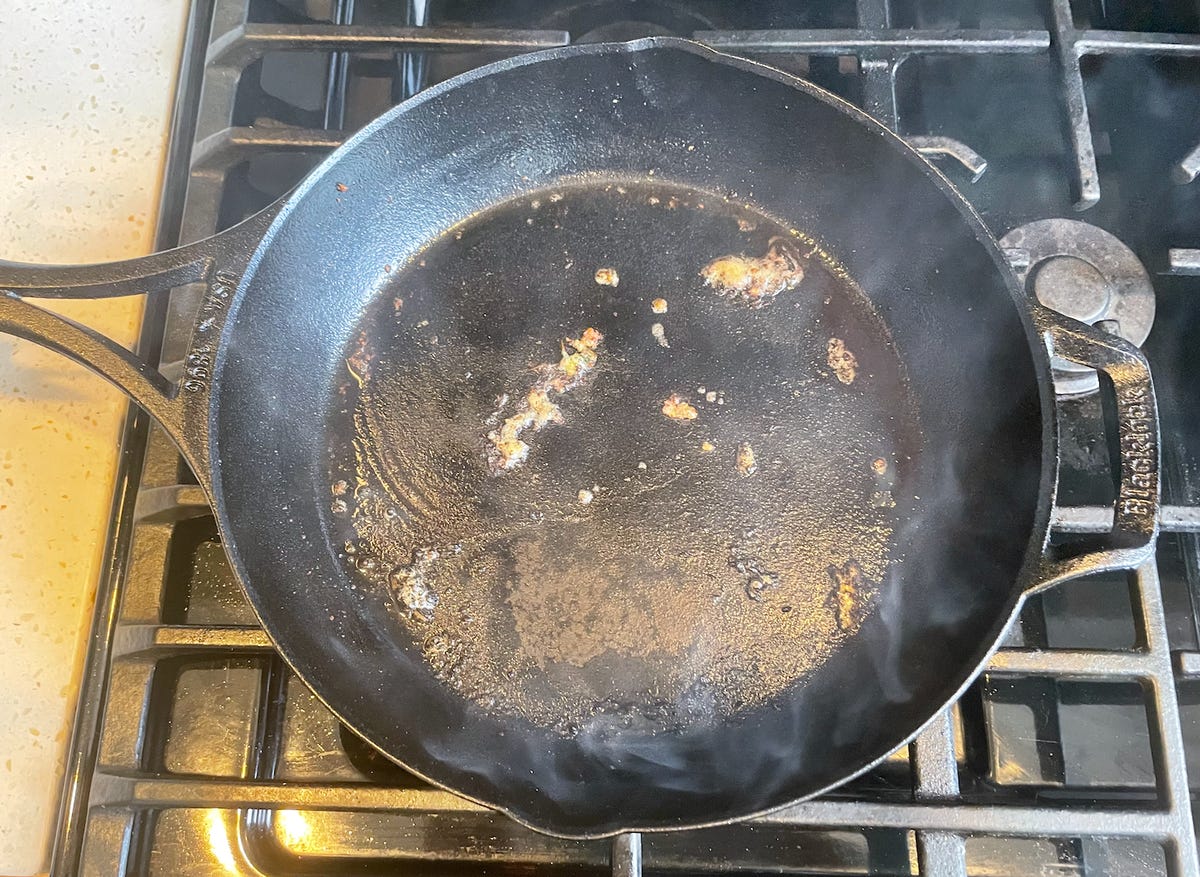
Clean your cast iron while it’s still warm.
David Watsky/CNET
Scrape with a wooden spoon or soft-bristle brush
With the hot water having loosened food from the pan’s surface, now it’s time to use a wooden spoon or soft brush to remove whatever’s left.
I like this $10 Oxo cast-iron brush for cast iron. It works great on a classic flat skillet but has separated tufts of bristles so it’ll work really well on cast-iron grill pans or grates. If you prefer something more natural, a palm scrub brush like this one will work, but it might not last as long. You can employ a soft sponge but know that it’ll probably be the final act for that sponge.
Avoid using metal scrubbers that will damage the cast-iron surface. And beware of rubber and plastic spatulas, especially cheap ones, as they may melt against the hot metal.
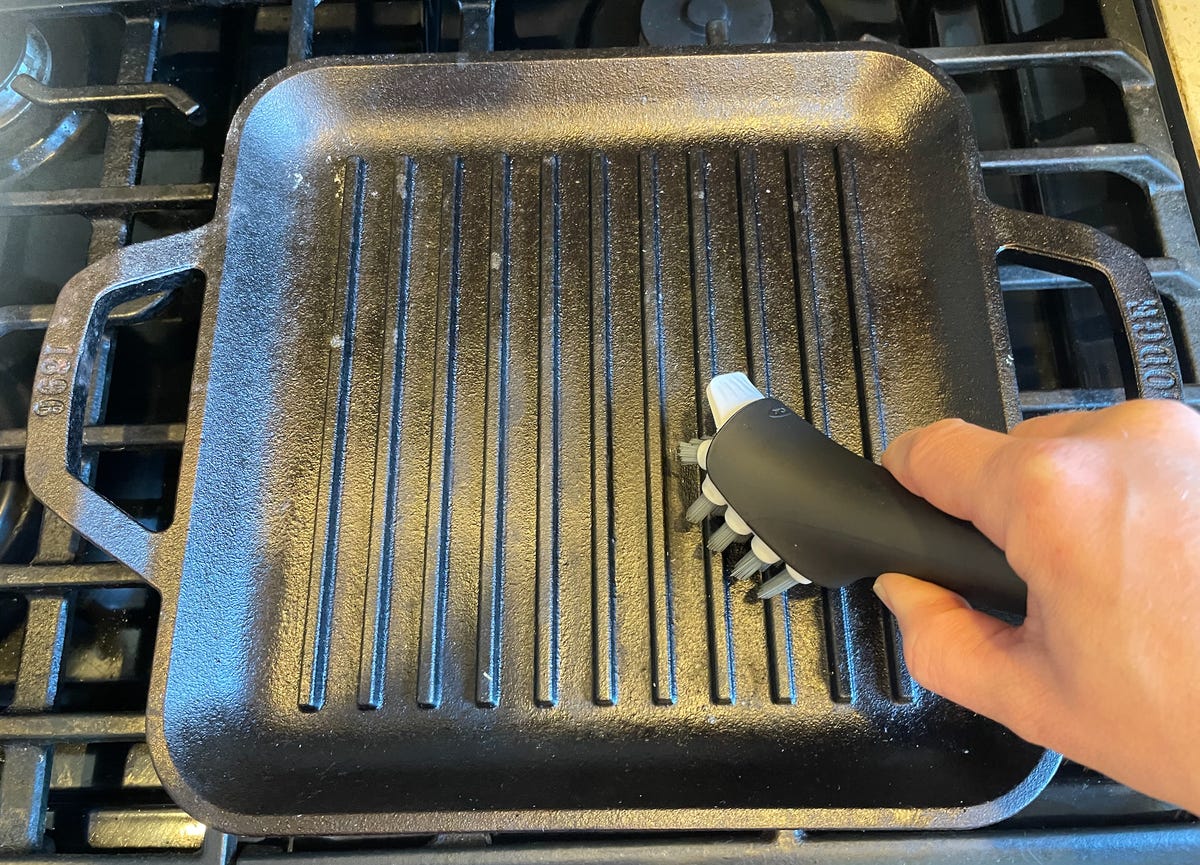
This $11 Oxo brush is tough and especially good for cleaning between the grates of cast-iron grill pans.
David Watsky/CNET
Use salt to clean cast iron for stubborn, stuck-on foods
From a glance at your skillet, you should be able to tell what kind of cleaning task you have on your hands. After most uses, a dousing of warm water should do the trick. But if things are extra-sticky, sprinkle the cast iron with bit of kosher salt (without water) and scrape it gently with a flat-ended wooden spoon or spatula. Dump the salt and add some water to get things moving.
Read more: 4 Frying Pans I Couldn’t Live Without
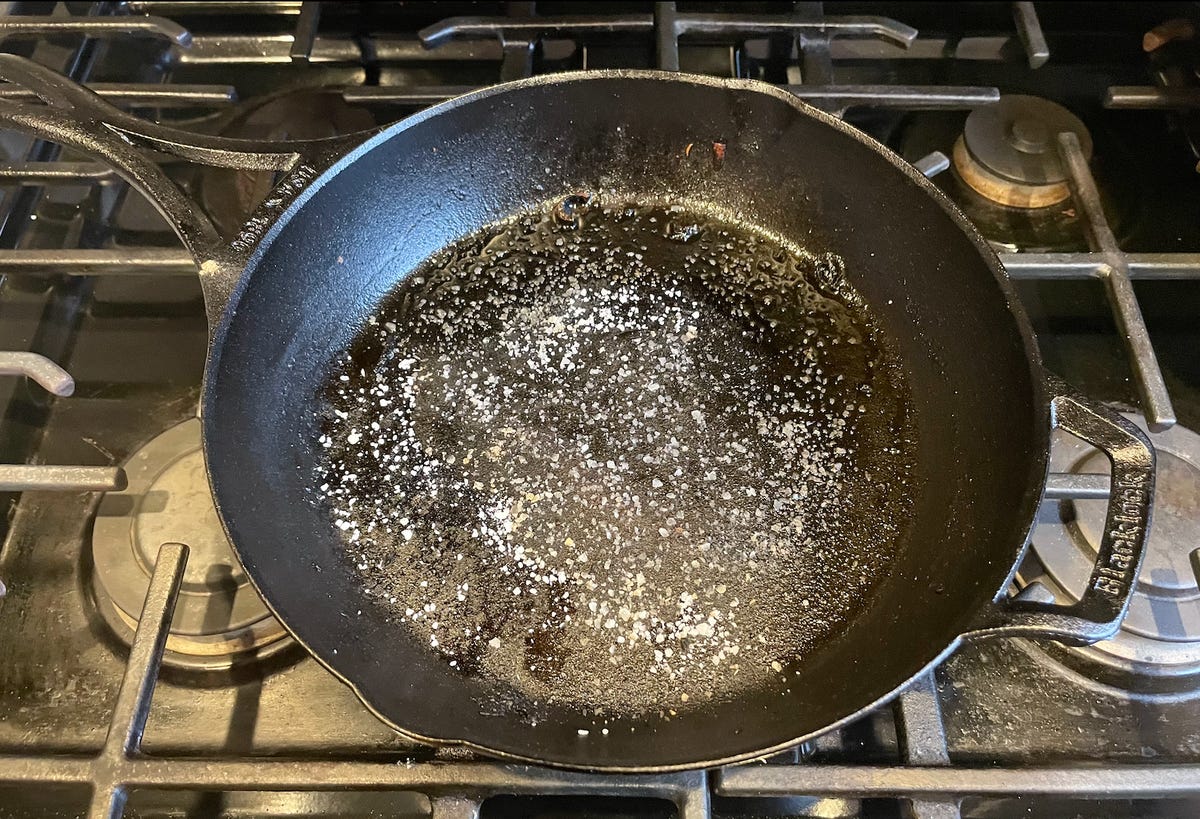
A bit of kosher salt goes a long way in lifting stubborn bits of food.
David Watsky/CNET
If you need to scrub harder than you can with a wooden spoon or rag, use a cast-iron safe brush like the ones mentioned above.
Dry your cast iron immediately
Rusting is the most common problem folks face with cast iron, but it’s also one that is easily avoided. It’s important to dry your cast iron immediately and thoroughly. The best way is to use heat from the stovetop or oven, which will dry your skillet from the inside out, but you can also use a dry rag.
To dry a pan on the stove, just put it over low heat for a few minutes. You’ll see it release some steam and possibly some smoke too. When that starts to slow, your skillet is dry. Use medium heat to dry the pan in the oven if it’s still on. About 5 minutes at 325 F should be plenty.
Give it a quick reseasoning, why don’t ya?
After it’s dry and while it’s still hot, you can (and should) feel free to season it more with a cast-iron seasoning wax (I like Made In’s mix of beeswax, canola and flaxseed oil) or some other high-heat cooking oil. For more on that, check out this CNET guide to perfectly seasoning your cast-iron skillet
.
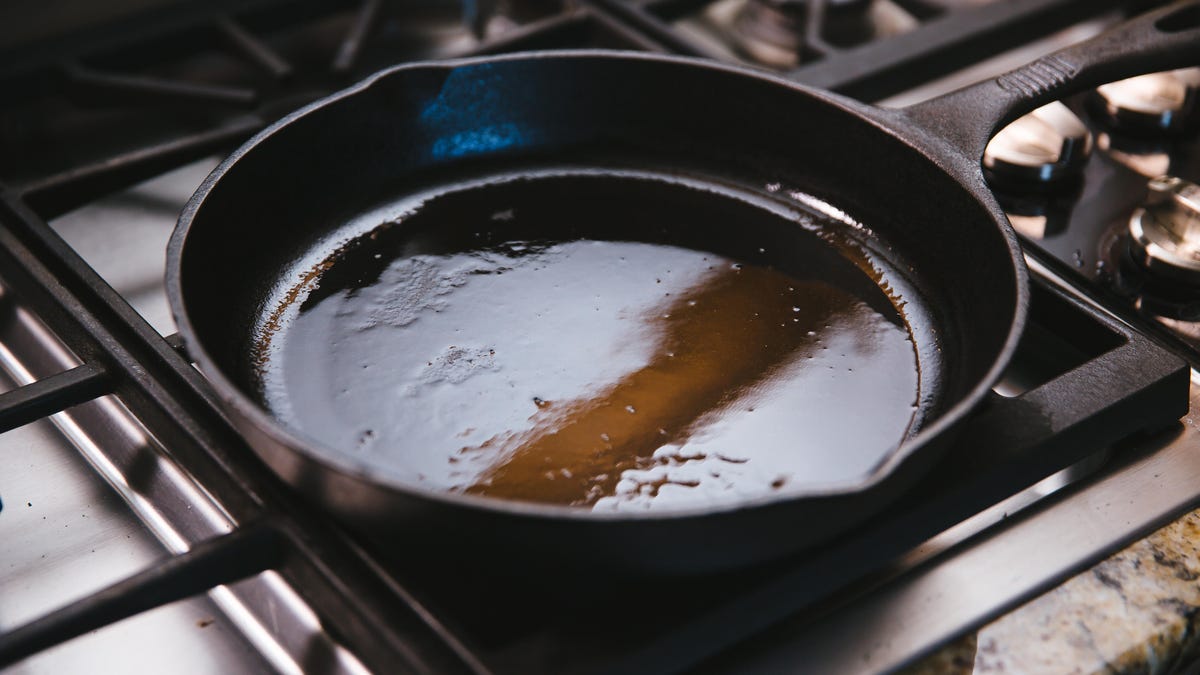
A quick seasoning after every few uses will keep your cast-iron skillet in great form.
Tyler Lizenby/CNET
Can you use soap on cast iron?
The No. 1 cast-iron cookware cleaning question is whether or not you can use soap to clean a skillet or grill pan. The answer is yes, but you should try not to. A little bit of soap — I mean a real small dab — won’t ruin your cast iron, but certain harsh soaps will erode the nonstick patina and could also affect the flavor your cast iron has developed.
More cookware coverage
The Secret Tool for Cleaning a Cast-Iron Skillet Is Already in Your Pantry – CNET
Source: Media Star Philippines

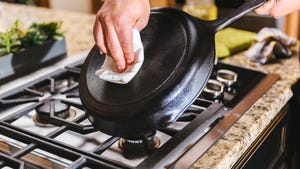
0 Comments